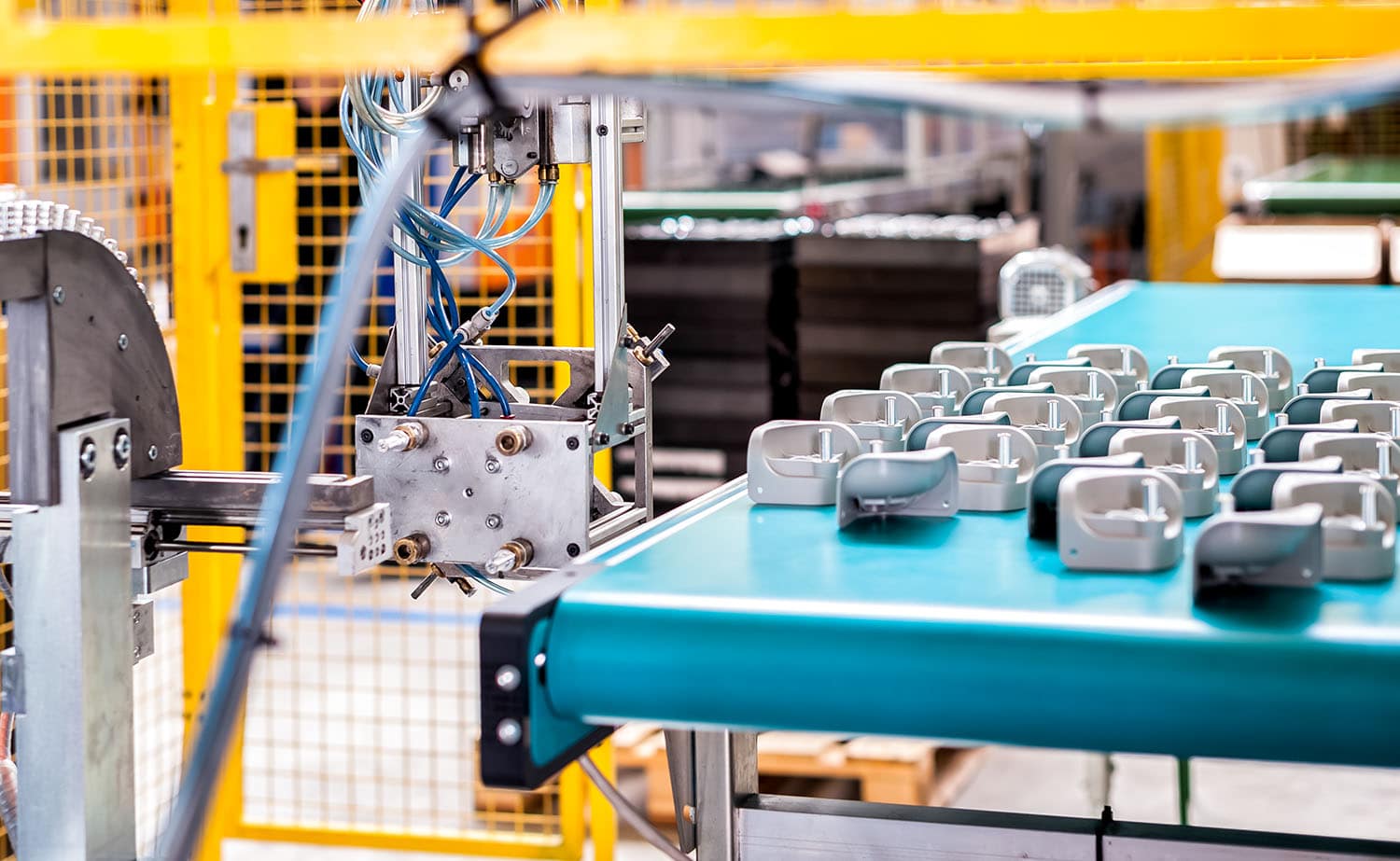
- Innovative and industry-specific
The assembly of plastic parts meets the requirements of virtually all industries in which high-quality industrial plastics are used. The spectrum ranges from the foodstuffs and packaging industry through automation technology to medical technology. The limit of what is possible is not defined by the application but by the current technology.
- Designing the future
One of the most important aspects of a manufacturing company today and in the future is individualized production. More and more requests are being received for the assembly of plastic parts on the basis of drawings or CAD/CNC manufacturing data.
E-manufacturing, i.e. the production of individual parts using fully electronic data, is already an important component of our daily business. Solutions to your requirements will also be offered in the future.
Advantages for you
Manufacturing according to your specifications
Even small quantities can be produced
Production according to drawings or models – either prepared by you or by us
Free advice on the selection of plastics, optimized construction with plastics and on all questions relating to the use of our plastics.
- PA – Polyamide
In the assembly of plastic parts, polyamides (PA) are linear, partially crystalline polymers with good mechanical properties and good chemical resistance to organic solvents. However, they can be easily attacked by acids and oxidizing chemicals.
Due to their excellent strength and viscosity, as well as their excellent sliding behavior, polyamides (PA) are often used as a construction material.
Murtfeldt uses these thermoplastic plastics as a material for the production of individual finished parts for machine and plant construction.
- PE – Polyethylene
Polyethylene (PE) is a partially crystalline, apolar thermoplastic plastic. The different polyethylenes differ in their respective molar mass (molecular weight), which is decisive for the physical properties of the individual polyethylene types.
They are characterized by high chemical resistance, good insulating properties and good sliding behavior.
However, the mechanical properties are only very good in PE-UHMW, the type used by Murtfeldt. For this reason, this type of polyethylene is ideal as a technical material for use in mechanical engineering.
- POM – Polyoxymethylene
Polyoxymethylene (POM) is a partially crystalline high-molecular-weight thermoplastic plastic that is characterized by high rigidity, low friction values and excellent dimensional and thermal stability.
The special features of this polymer, which can even replace metal in many cases, are its high viscosity down to -40 °C, high abrasion resistance, low coefficient of friction, high resistance to thermal aging, good sliding properties, good electrical and dielectric properties as well as low water absorption.
This high-performance plastic is used wherever high strength is required and extraordinary demands are placed on it.
*PET – Polyethylene terephthalate
In the assembly of plastic parts Polyethylene (PE) is a partially crystalline, apolar thermoplastic plastic. The different polyethylenes differ in their corresponding molar mass (molecular weight), which is decisive for the physical properties of each type of polyethylene.
Other characteristics of polyethylene terephthalate (PET) are its stability to slightly acidic solutions and its high strength.
